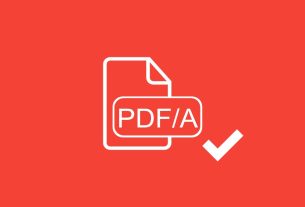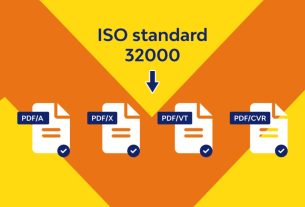Digitization seems to be on everyone’s lips these days. Once it’s a Pixel, someone is sure to pronounce this ever-popular buzzword, followed by many names Of companies, digital philosophers and data gurus. But what exactly do companies gain by “capturing”?
Past and (still) present
Long before the advent of digitization, postal items were opened, sorted, time-stamped and sent back to the internal post office box of the competent person. after, this person viewed the document, assigned the invoice, for example, to an account and entered it into the accounting system. The document was then transmitted for signature by the person responsible for the respective cost center.
After approval, the invoice returned, the payment was made, and then the documents were deposited in a thick folder, which after ended up in an archive in the basement. The filing cabinets and filing cabinets in the basements were filled to the ceiling, and when a document was needed, searches on the shelves, folders and directories began. The paper requires a lot of time and money. And woe to all those who have misplaced a folder or a document! Many companies are still relying on these old practices – but are currently intensifying their efforts towards digitization.
Scanning while capturing?
![]()
Digitization can bring value to companies in a number of processes. Take the buzzword “capture,” for example. Every day we are inundated with documents, data, emails and other information. We obtain both company-relevant and less relevant information through different channels and in different formats. Digital processes can monitor, analyze, sort, categorize and guide this data through the relevant processing steps. The objective of digitization is to facilitate the following machining steps as easily as possible. However, machines and algorithms cannot necessarily handle all scenarios.
To start the whole process, the incoming documents must first be scanned and an OCR engine must be used to detect, export and link the necessary information to the document. This is the only way, for example, to recognize and read supplier invoices in a wide variety of formats in order to facilitate the processing of Electronic Payments.
![]()
Optical character recognition (OCR) not only speeds up the process from document receipt to accounting to payment – the stored information also makes it possible to find documents at any time based on full-text search. The printed copy of the invoice disappears as soon as it is scanned, all the necessary data is recorded, the payment is approved and made, and all this is stored in the electronic archive. This means not only saving, but also protecting the document in terms of access, time stamps and electronic signatures.
The places where we work are also changing. This Transformation requires flexibility. More and more employees are working from home, but need access to documents. Only through digitization can the necessary information be made available. By the way, this is also a dream come true for any clean office inspector who expects employee offices to be less and less cluttered. For the same purpose, there are also document processes that refer from the company. Again, in most matter, scanned documents are much faster, safer and more efficient.
But there is more! During Audits, it is no longer necessary to transport binders from the basement to a meeting room for the auditor. Instead, the examiner simply obtains the appropriate access rights to view the files and checks the documents remotely in the digital archive. This saves both parties a lot of time and stress. If this scenario is not desirable, it is also possible to store the documents on a secure USB key for delivery to the auditor.
The digital butterfly net

The document input channels are as varied as the formats and qualities. What can be captured is captured, both in the analog and digital world. Even in the era of electronic invoices, online stores and e-commerce, Paper has not yet come in handy: documents such as invoices, tax forms, service reports and contracts are still often issued on paper, sent and received by mail in the old fashioned way.
To obtain the desired electronic form for the document process, paper documents are scanned. Good image quality is essential to guarantee low detection error rates. To obtain good image quality at a high compression ratio, processing power is required that local multifunction printers usually do not have. Traditionally, a scanner produces a TIFF or JPEG image for each page. Some devices are capable of creating PDF files directly, and the most recent ones produce files that comply with the PDF/A standard. However, the quality of these files varies considerably depending on the provider and the conversion software.
A centralized analysis server is recommended to solve this quality problem. The service performs all the tasks that can be delegated by the local scanning stations. This server receives the scanned image files, analyzes the documents and generates a PDF/A document with all the text and image information compressed to the correct size. The document can also be stamped With a time stamp or A digital signature. The collected information is now available in a standardized and high-quality format, suitable for human readers and automated processing with computer applications.
On the other hand, there is a contingent of digital manufacturers who offer electronic formats with insufficient PDF quality, which leads to problems and unexpected costs in the processing of documents. PDF conversion is not just about wrapping an image in a PDF “envelope”. The PDF document can include text and barcode recognition, embedded metadata and digital signatures.
Rapid technological development means that the systems used today are rapidly becoming obsolete and need to be replaced. However, the content of the archived documents remains relevant. It should therefore be able to be migrated to the new systems in an unchanged form. Lossless migration requires a stable document format that lasts throughout the entire life cycle of the systems.




